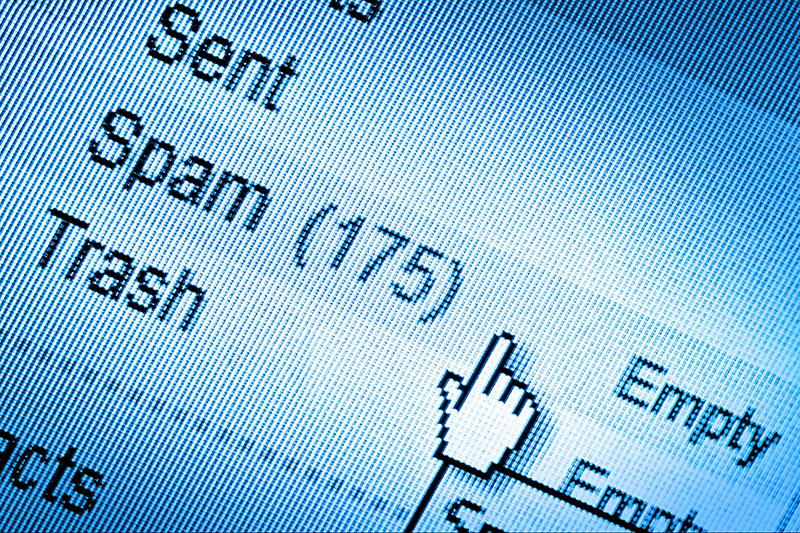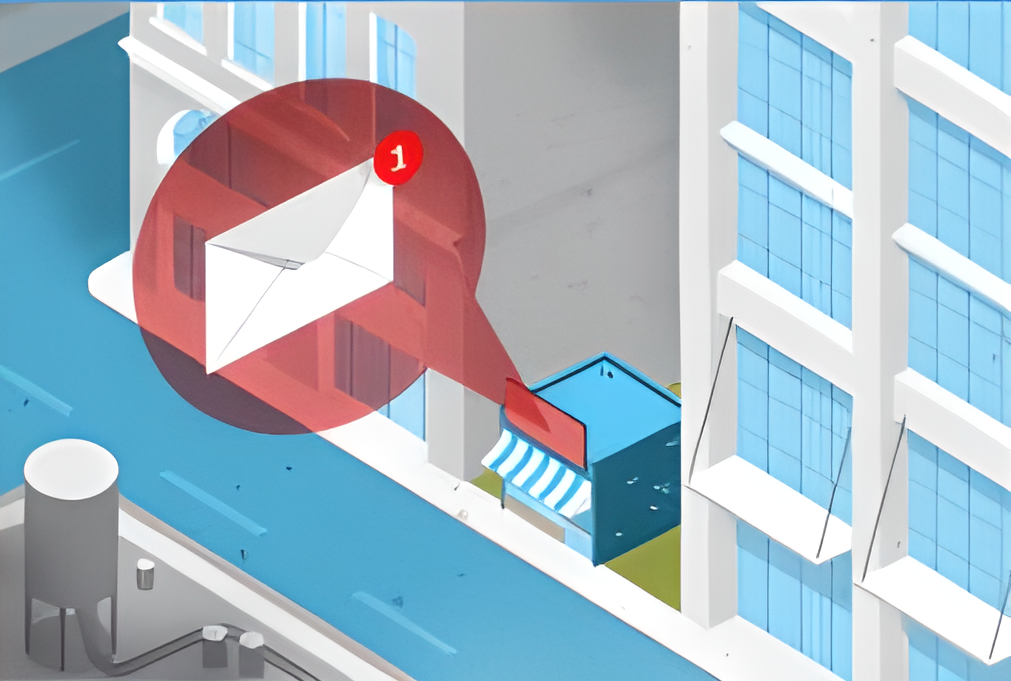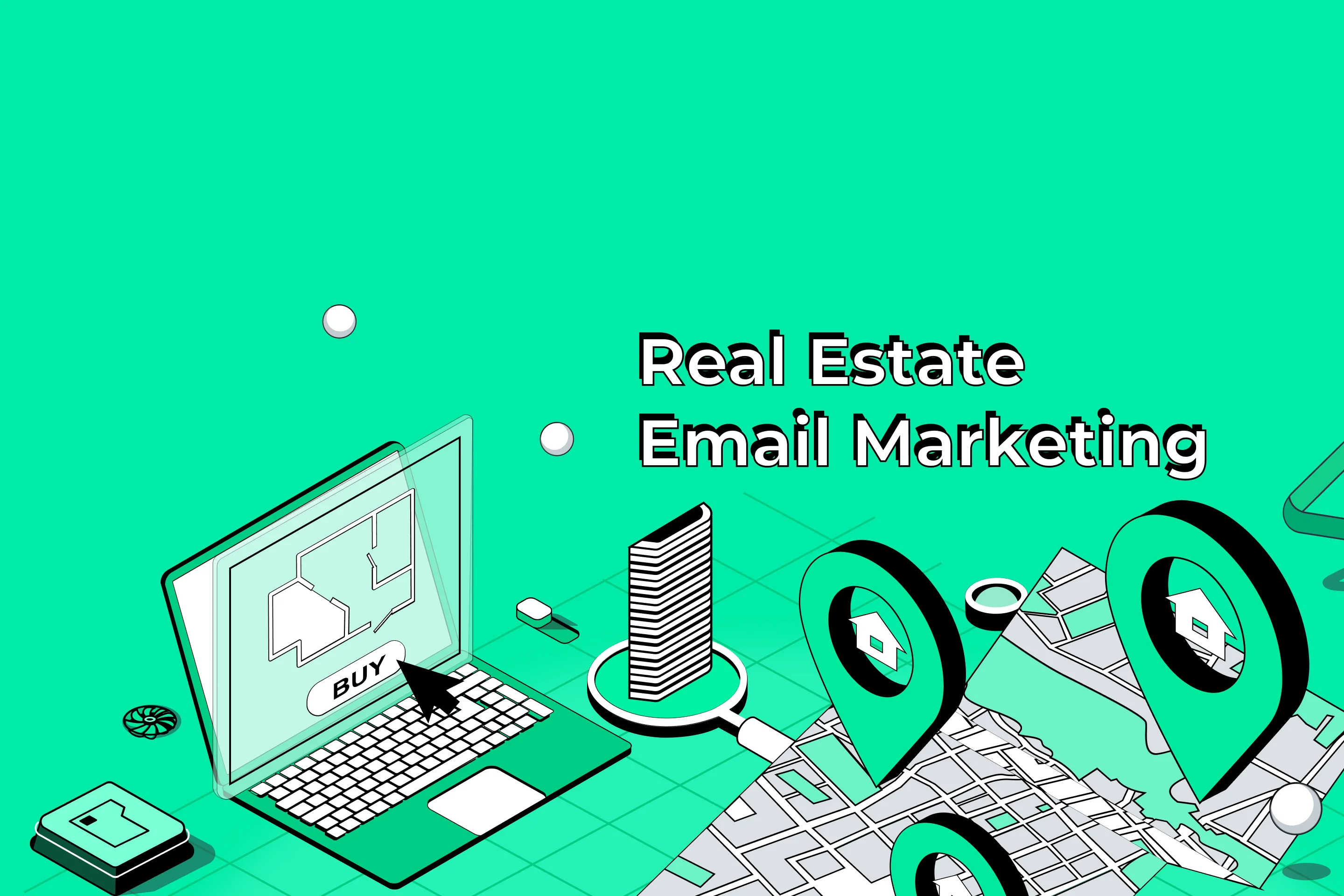Email Marketing for Small Businesses Made Simple: 7 Tips
As a small business, you need to take advantage of every opportunity you can to engage and retain your customers.Though social media and Pay-Per-Click (PPC) advertising can be valuable sources of customer engagement, email still yields the highest return on investment. For every dollar spent on email marketing, businesses can expect to see an average return of $44. If you are not seeing these results from your campaigns, you may be looking for some fresh ideas. Using email marketing best practices, you could turn those problems into profits.Are you struggling to get more opens, more readers, more clicks, and more hits through to your products and services from your email campaigns?In this post, we give you 7 actionable tips to improve your email engagement and get you better returns on your campaign investments.
What Do I Need?
 (Source: stock.adobe.com)First off?if you are not using an email marketing service provider (ESP) with an established reputation and user-friendly features, you should be. Webmail services (such as Outlook and Gmail) do not give you the flexibility you need to accurately target your customers.DirectIQ and other ESPs are designed specifically with marketing in mind. They offer advanced features and usability for creating campaigns webmail clients cannot.
(Source: stock.adobe.com)First off?if you are not using an email marketing service provider (ESP) with an established reputation and user-friendly features, you should be. Webmail services (such as Outlook and Gmail) do not give you the flexibility you need to accurately target your customers.DirectIQ and other ESPs are designed specifically with marketing in mind. They offer advanced features and usability for creating campaigns webmail clients cannot.
With accessible interfaces, easy mailing list management, email template design, and campaign reports, they are as essential to your business as a dot to a com.Choosing an established ESP with a solid reputation could also help you avoid the spam box. The more emails from a particular ESP get flagged by spam filters, the more scrutiny it receives going forward. A good reputation with spam filters (their ‘sender score?) is not only important, but essential for the longevity of a good ESP.This is why we have a strict, no tolerance spam policy. You can even use our dedicated Spam Doctor to scan your emails for any red flags before you hit send.Use a reliable and reputable ESP for enhanced workflow, access to campaign creation and management features, and better deliverability. Give your emails the best chance of getting through.
Do I Need an Expert?
 (Source: stock.adobe.com)Though you could certainly benefit from offloading your email marketing to a dedicated team of experts, as a small business you may not have the funds.ESPs give you all the technical powers of an expert marketing team, without the expense. These tools are extremely easy to navigate. Once you understand the essential techniques in leading email marketers? repertoires, you will have all the expertise you need to implement highly effective, customer-centric email campaigns.
(Source: stock.adobe.com)Though you could certainly benefit from offloading your email marketing to a dedicated team of experts, as a small business you may not have the funds.ESPs give you all the technical powers of an expert marketing team, without the expense. These tools are extremely easy to navigate. Once you understand the essential techniques in leading email marketers? repertoires, you will have all the expertise you need to implement highly effective, customer-centric email campaigns.
The Metrics
 (Source: stock.adobe.com)Creating a top-notch email campaign takes more than an ESP and some simple instructions. You need to know what you are trying to achieve, what you need to do reach your goals, and how you can use the tools you have to get there.A quality ESP breaks down data on your campaigns so you can better understand where you are and where you need to be. DirectIQ displays your campaign results in easy to understand reports, so you can compare your numbers for different key performance indicators (KPIs) to constantly hone your email marketing approach.You need to focus on the best sets of data to gauge customer activity, email deliverability, and the value you gain from your email marketing endeavors.Here’s a quick guide to the key metrics:
(Source: stock.adobe.com)Creating a top-notch email campaign takes more than an ESP and some simple instructions. You need to know what you are trying to achieve, what you need to do reach your goals, and how you can use the tools you have to get there.A quality ESP breaks down data on your campaigns so you can better understand where you are and where you need to be. DirectIQ displays your campaign results in easy to understand reports, so you can compare your numbers for different key performance indicators (KPIs) to constantly hone your email marketing approach.You need to focus on the best sets of data to gauge customer activity, email deliverability, and the value you gain from your email marketing endeavors.Here’s a quick guide to the key metrics:
- Open rate: The percentage of emails that get opened by recipients
- Click-through rate: The percentage of people who click on links from your emails through to your site
- Unsubscribe rate: The subscribers who unsubscribe from your mailing list using the links or opt-out buttons provided in your emails
- Hard bounces: The percentage of emails you send that ?bounce back? because an email address no longer exists
Using these KPIs as a measure, compare the numbers for each email campaign you send. See how much the tips provided in this post affect your results.Data-driven approaches have proven increasingly effective at facilitating customer-centric marketing approaches. They can save valuable time and resources guessing exactly what email tactics work with your industry, your products, and your target audience.
1. Incentivize Potential Subscribers
 (Source: stock.adobe.com)Without subscribers to your mailing list, your efforts to create winning campaigns will be wasted. Any emails you send will produce zero results if you fail to find a way to get visitors to your website to give you their email.The truth is, the average internet user will not give their email address away to just anyone. You need to give them an incentive’something ?above and beyond? simply offering of services or products.
(Source: stock.adobe.com)Without subscribers to your mailing list, your efforts to create winning campaigns will be wasted. Any emails you send will produce zero results if you fail to find a way to get visitors to your website to give you their email.The truth is, the average internet user will not give their email address away to just anyone. You need to give them an incentive’something ?above and beyond? simply offering of services or products.
More than 95% of visitors will not make a purchase on their first visit, so you need to find other ways to get them to hand over their details for later retargeting.Luckily, some smart people have figured out the incentives that work. According to the research, visitors are most willing to share information about themselves in exchange for authoritative reports (or ?white papers?) which provide detailed information on issues of interest. Second, 63% of people would share information about themselves for an ebook.
Webinars, case studies, and third-party analytic insights also rank high for the percentage of people willing to provide their email in return.Whether you use an ebook, report, or webinar to incentivize potential subscribers, any content you offer should be relevant to your target customer.
Think about what your customer base may want to read, view, or watch. What are the problems they encounter in their daily lives that you can provide expert advice on? What are their ?pain points??If your business is a computer repair shop (the third most common small business enterprise in the U.S.), you might provide your customers with a free ebook on solving common IT issues, setting up your email, or how to get a window back once it disappears behind another. These are the kind of solutions people turn to their devices for daily. If you offer robust fixes to common problems, you’ll get more surfers clicking *subscribe*.
2. Make It One-Click (and Tell Visitors What to Expect)
 (Source: stock.adobe.com)Don?t ask for too much information.Though your visitors may appreciate the gesture of a generous incentive, they are not likely to stick around for long to complete your signup form. Research suggests that 2-5 steps is the optimal length for online forms. Once you have turned your visitors into engaged subscribers, you can more easily gather additional data that will better help you understand how to meet their particular needs.Position your signup box near the top of the page so it can easily be found by new and returning customers.
(Source: stock.adobe.com)Don?t ask for too much information.Though your visitors may appreciate the gesture of a generous incentive, they are not likely to stick around for long to complete your signup form. Research suggests that 2-5 steps is the optimal length for online forms. Once you have turned your visitors into engaged subscribers, you can more easily gather additional data that will better help you understand how to meet their particular needs.Position your signup box near the top of the page so it can easily be found by new and returning customers.
Don?t make your users jump through hoops to get on your list. A minimal signup box displaying your data fields and a one-click signup button (your call to action (CTA)) should suffice.The inclusion of a button has proven an increasingly effective way to maximize subscriptions.
By allowing users who are already logged into Facebook and Google accounts to sign in using these credentials, you relieve them of the need to fill in a form at all. Reducing frictional put offs such as form-filling are integral to optimizing subscriber journeys to a purchase.Insert copy that tells subscribers exactly what they are going to get. If you use your mailing list primarily to send weekly newsletters on specific topics of interest, tell them. If you only send monthly product updates, let them know. Be clear and honest with your potential customers and tell them what they are signing up to. You will build greater trust for your brand and gain subscribers you can retain.
3. Watch Your Timing
 (Source: stock.adobe.com)?Timing is everything,? as they say. With email marketing, it certainly matters.Both the frequency and clock time of your emails have been shown to influence KPIs.At the extreme end of the scale, if you spam your customers every night from 1 in the morning until 5, whatever the standard of your content, you are likely to get a high number unsubscribing. But if you only send annual emails to your subscribers, they are either going to forget you or fulfill the need or desire that drew them to your products in the first place somewhere else.No doubt, timing is key.
(Source: stock.adobe.com)?Timing is everything,? as they say. With email marketing, it certainly matters.Both the frequency and clock time of your emails have been shown to influence KPIs.At the extreme end of the scale, if you spam your customers every night from 1 in the morning until 5, whatever the standard of your content, you are likely to get a high number unsubscribing. But if you only send annual emails to your subscribers, they are either going to forget you or fulfill the need or desire that drew them to your products in the first place somewhere else.No doubt, timing is key.
But where is the middle ground? When is the best time to send emails, for the highest levels of customer engagement?Well, according to the experts? 10 a.m.At 10 a.m., you can drop your email into your subscribers? inboxes prior to breaks, lunches, and cups of coffee. Office workers are likely to be near their desks, already having sifted and deleted non-priority mail earlier in the morning.The 10 a.m. peak is just 7% ahead of other times though. Don?t send all your campaigns out at 10 o?clock on the dot.
Vary your timing to see what gets the best results for your audience. The research shows high rates from around 10 am until 12, so as long as you send your emails within this period you should be getting a high degree of engagement.Frequency is a little more tricky to get right. The one-size-fits-all answer is that the best digital marketers contact a single email address between 2-5 times per month.This is a good rule of thumb.
But the real answer is that you should contact an email address only when you have something of value to offer.If you offer free courses or webinars, you may be emailing daily support and tips to many subscribers. Your email frequency for the months in which you send additional content such as this may be high; it doesn?t matter. This is relevant, expected, and highly targeted content that your subscriber wants to receive.The best advice is to retain your customers by adding value with every email you send.
4. Segment Your List
 (Source: stock.adobe.com)Email frequency is so difficult to advise on because marketers are increasingly moving away from ‘regular? emails and toward more targeted campaigns. Send your campaigns to the most relevant subscribers and different segments of your list will receive emails at different times.Segmentation gives you the flexibility to adapt to the changing needs of your various subscribers. Instead of sending emails to every person on your mailing list, you target only the most relevant customers with the most relevant info.
(Source: stock.adobe.com)Email frequency is so difficult to advise on because marketers are increasingly moving away from ‘regular? emails and toward more targeted campaigns. Send your campaigns to the most relevant subscribers and different segments of your list will receive emails at different times.Segmentation gives you the flexibility to adapt to the changing needs of your various subscribers. Instead of sending emails to every person on your mailing list, you target only the most relevant customers with the most relevant info.
Split your list into segments to send dedicated emails to each group and better engage them with each campaign.DirectIQ makes it easy to split your mailing list into smaller groups. Segmenting your subscribers into categories to send emails reflective of their customer-type has been shown to produce up to a 760% increase in tangible revenue?a huge boost.It can take careful consideration to establish the best characteristics to group your subscribers by.
The effectiveness of your campaigns depends not only on the practice of segmentation but also how accurately you achieve it. But as a small business?you likely already know, or have a deep understanding of, your customers.Many small businesses, such as insurance and travel companies, split their customers up for other purposes because they offer customer-centric packages (for example, 18-30, 30-60, and 60+ age-specific holidays).
Your business may have standard operating procedures (SOPs) such as these which are easily and effectually transferable to segmentation groups.Use the knowledge of your business and your customers that you already have, to sort the people who follow your products and services into targeted chunks. This will lead you to the best categories to segment by, to create consistency across your sales channels, and to target your customers in a way that suits your business.
5. Make It Personal
 (Source: stock.adobe.com)If you are already adapting emails to particular customer-types, why not make them unique to each and every subscriber?At a minimum, the information on your mailing list should include the names of your subscribers. As you interact with your mailing list more you will gain more data to continually increase your ability to understand what they want.
(Source: stock.adobe.com)If you are already adapting emails to particular customer-types, why not make them unique to each and every subscriber?At a minimum, the information on your mailing list should include the names of your subscribers. As you interact with your mailing list more you will gain more data to continually increase your ability to understand what they want.
Use the tools available to you to strategically place this information into your emails for a more personalized experience.Personalization is reported to increase customer engagement by up to 74%. Even a small amount of personalization can make a customer feel special. Just inserting your customers? names into subject lines has been proven to make recipients 26% more likely to open your campaigns.
But it’s not just subject lines that can make for a more individualized email encounter?with DirectIQ you can insert fields to be filled with any data you have on your subscribers, anywhere in your emails. Create as many custom fields as you want, to create campaigns that speak to recipients as individuals.You could create birthday emails with a personalized gift certificate for your most active subscribers that include personalized fields for subscriber name and birthday.
Or you could use personalization to give deeper information about client accounts. Send emails with personalized elements that relate to subscriber accounts for alerts, reminders, and notifications?perhaps monthly purchase records or usage details for a service.Take advantage of any data you have that you can use to make your emails different for each recipient. Relevance translates to interest and use?the driving forces behind the creation of a brand.
6. Write Engaging Subject Lines
 (Source: stock.adobe.com)We’ve said it before and we’ll say it again: you won?t win anybody over with your emails unless they read them. Shockingly, 47% of email recipients open emails based on subject line alone, which means yours need to be right on the mark.Your subject lines should create reasons to open. These reasons could include curiosity, interest, urgency, or even apprehension.
(Source: stock.adobe.com)We’ve said it before and we’ll say it again: you won?t win anybody over with your emails unless they read them. Shockingly, 47% of email recipients open emails based on subject line alone, which means yours need to be right on the mark.Your subject lines should create reasons to open. These reasons could include curiosity, interest, urgency, or even apprehension.
Entice your reader by speaking to them with purpose and intent. Consider why they would want to open your emails. If your subject line doesn?t make them aware of the value they will gain from opening, they won?t.Getting good reasons to open into subject lines limited to around 65 characters can, of course, be difficult.
There are over 205 billion emails sent every day. How to come up with a subject line that is unique? that can compete with the hundreds of other emails your customers receive on a daily basis?You may need some inspiration. Here are some of our top tried and tested subject lines you can use in your campaigns today:
- <NAME OF FRIEND> Thought You Might Like This (curiosity)
- Offer Ends At <TIME> (urgency)
- Know This About <TOPIC> (interest)
- I Did <SETUP> And <REVELATION> (surprise)
- OK <NAME>, We Need to Talk. (apprehension)
Use these templates in your own emails, or use them as foundations to tweak for your business, your industry, and your customer base. Move forward with the recognition that what you put in your subject line matters.To see more templates, check out this post with 29 winning subject lines.
7. Dodge The Spam Filters
 (Source: stock.adobe.com)It has happened to us all. That one most important email you need to reply to?and it ends up in the junk.As it turns out, there is some rhyme and reason to whether your email is welcomed or ushered out of sight.
(Source: stock.adobe.com)It has happened to us all. That one most important email you need to reply to?and it ends up in the junk.As it turns out, there is some rhyme and reason to whether your email is welcomed or ushered out of sight.
Spam filters have become increasingly sophisticated over the years. Such a large number of characteristics are analyzed to evaluate the usefulness of an email but you can still get caught out.If you can feed these filters with the right information, in the right way, you can make sure the highest number of your emails get through. You just need to know what the spam filters look for.
Here’s a handy guide to ensuring your emails get exactly where you want them to go:
Don’t Use Purchased Lists
Purchasing a list of email addresses might seem like a quick and easy way to grow your pool of customers. But purchased lists can cause you more harm than good. Sending emails to people who are not expecting them can devastate your brand reputation. At best, your emails will end up in the junk folder, at worst, your address will be permanently flagged and you will have to set up a new domain and start over.
Partner With an Established and Reputable ESP
ESPs who fail to stop their users from sending junk can gain a reputation for spam. If you use one of these providers, your emails are likely to get flagged regardless of who you send to or what you send. You can avoid this by using an ESP with a solid reputation and a strict no spam policy (that’s us!)
Be Grammatically Correct (and No Shouting!)
If you fail to write emails with accurate grammar, you put yourself in danger of being flagged. Particularly risque tactics include writing in all caps (basically, shouting through email), and using excessive punctuation (such as ?!!!!? and ???????).
Your Sender Name Should Be Clear and Recognizable
You are unlikely to get many people opening your emails if they fail to recognize who they are from. Your from field should be simple to read at a glance and tell your recipient your email is from a familiar business. Select the same sender name in your from fields for all emails so subscribers come to expect what to look for in their inboxes when they want to find you.
Use a Spam Checker to Ensure Your Emails’ Deliverability
A dedicated spam checker to make sure your emails are not getting flagged is nice to have. This will check elements you are unable to check yourself. For example, there are so many words and phrases that could contribute to your email getting flagged, you could not check them all. Use a spam checker to analyze your emails and check them against spam filters? criteria. Our Spam Doctor takes care of this for you.
Onwards and Upwards
As your mailing list continues to grow, you may notice your open and click-through rates falling and your hard bounces going up. Email accounts get deleted or go unused all the time. Collecting more and more addresses means you will have larger numbers of these inactive subscribers.
But sending emails to inactive subscribers can skew your data and put you under the scrutiny of spam filters. At this point, be sure to have a cleanup. Get rid of those inactive addresses as often as you can to minimize their impact on your business? figures and reputation.
There are dedicated apps that can help you to do this, or if you’re a DirectIQ customer you’ll be able to do this on your own. Once you clean up your list, you should be left with only active subscribers who are receiving, hopefully reading and clicking through, to your emails. And don?t forget to check the numbers.
After optimizing your email using the tips above, begin to track your stats more carefully. Look at which metrics (open rates, click-through rates) show good results, and which could do better. Use the information you have to iteratively boost the effectiveness of your email marketing efforts to get the highest return.










